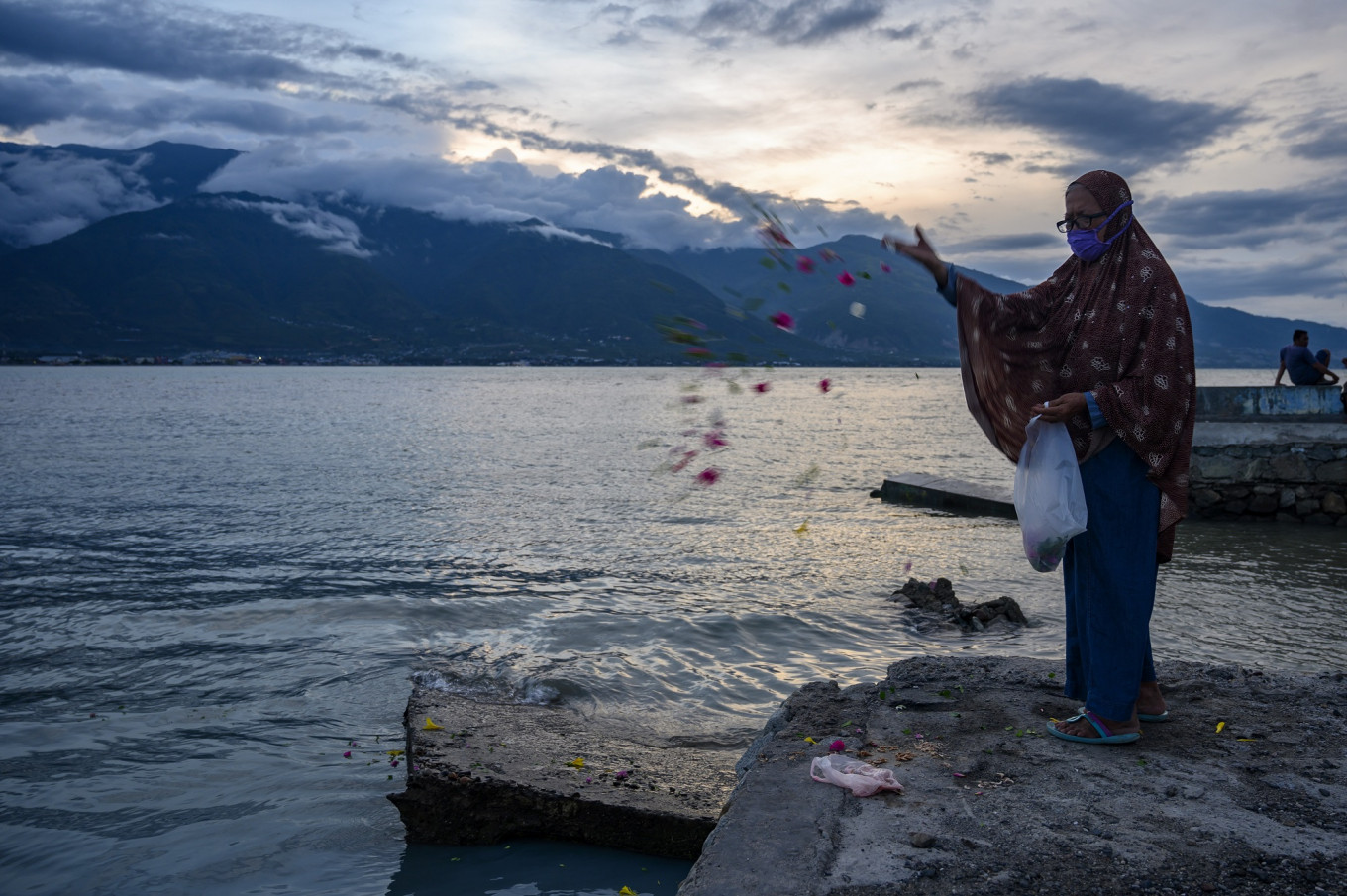Popular Reads
Top Results
Can't find what you're looking for?
View all search resultsPopular Reads
Top Results
Can't find what you're looking for?
View all search resultsStudy on potential tsunami aims to inform, not incite panic: BMKG
Change text size
Gift Premium Articles
to Anyone
T
he Meteorology, Climatology and Geophysics Agency (BMKG) has clarified that the purpose of a recent study conducted by the Bandung Institute of Technology (ITB), which found that Indonesia is vulnerable to a potential 20-meter-tall tsunami following a megathrust earthquake, is aimed at bolstering Indonesia’s disaster mitigation infrastructure and reducing the potential losses and damage due to the disaster.
The research has received significant media coverage over the weekend, gaining traction among social media users who were worried that the study was an exercise in fear-mongering disguised as science.
BMKG head Dwikorita Karnawati reassured the public that the study, which was conducted in collaboration with the agency, ITB and the Maritime Affairs and Fisheries Ministry, was a valid scientific endeavor. She explained that the study was intended to gauge the country’s disaster mitigation capabilities – including its early warning system – in the event of a 20-m-tall tidal wave predicted to emerge following a major quake that affects regions along the southern parts of Java Sea, among other regions.
“As a country that’s vulnerable to earthquakes and tsunamis, studies of this kind should not incite public anxiety or panic,” Dwikorita said in a statement issued on Monday.
“Instead, it should bolster the disaster mitigation system so we can reduce or prevent the impacts of the disaster.”
Since 2008, the government had conducted a series of studies to anticipate potential tsunamis following a megathrust quake, similar to the 2004 Boxing Day Tsunami that hit Aceh, she said.
Over the years, the BMKG’s own early warning system has been adjusted to the requirements shown by the studies’ models in order to shorten the time gap between the actual occurrence of the disaster and the issuance of an evacuation alert to the public.
“Within three to five minutes following an earthquake, the monitoring and early warning systems – supported by the Internet of Things [Iot], super computers and artificial intelligence [AI], will automatically distribute a tsunami alert to residents in the most vulnerable regions,” Dwikorita said, adding that the alert was expected give a maximum of a 17-minute evacuation window, assuming that the tsunami arrived within 20 minutes after the earthquake.
She called on the public and regional administrations to remain vigilant and contribute to the local disaster mitigation services to reduce future losses and damages caused by potential tsunamis and earthquakes.
“Mitigation preparation that aligns with local wisdom is crucial, as stipulated in Law No. 24/2007 on disaster mitigation,” Dwikorita added.










